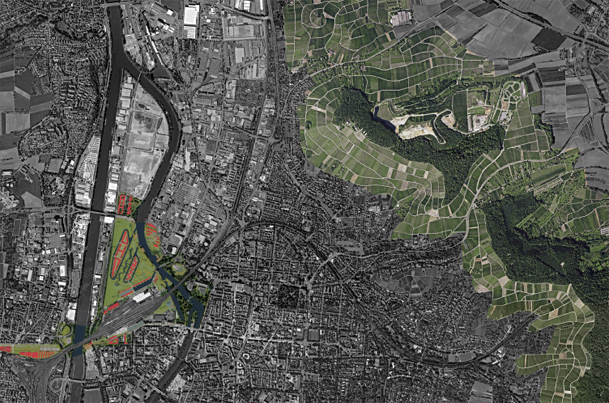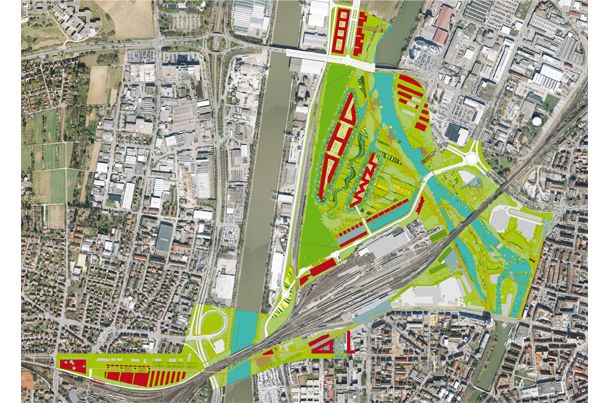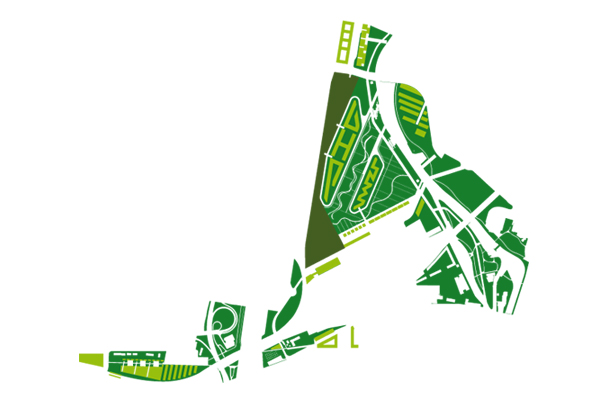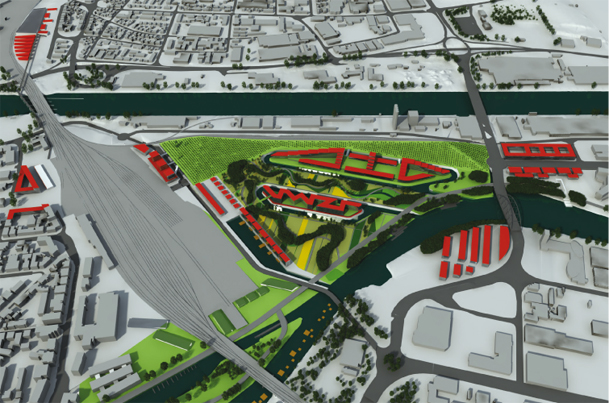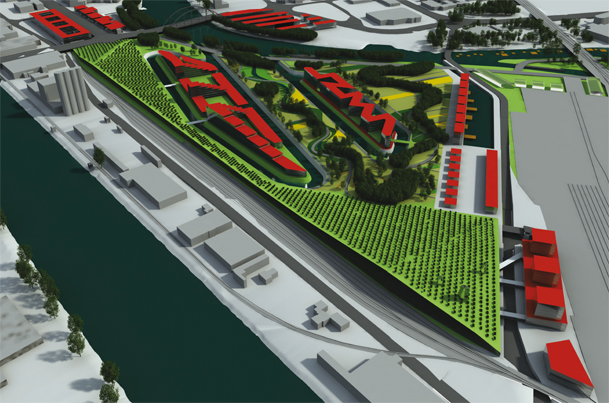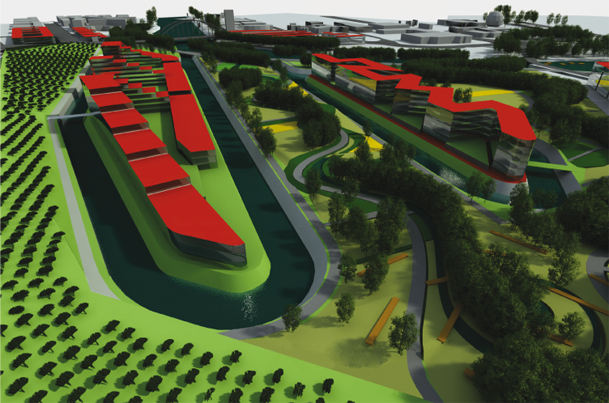Client:
Site:
Area:
Year:
Authors:
Landscape design:
Collaborators:
Consultant:
Traffic design:
Project type:
City of Heilbronn
Neckarvorstadt, Heilbronn, Germany
100 ha
2009
Marco Venturi, Lučka Ažman Momirski
Marta Vahtar, Miloš Kosec, Saša Ropač
Miha Bukovec, Marko Stanovnik, Nac Žuber
Urban Thelen
Darko Potočnik
Competition, final selection
The area is freed of traffic passing through, covering the north-south road with vineyards and lowering the Westrandstrasse by as much as -6 metres to link the project area with the centre by two tunnels side by side at different levels, one for pedestrians, and the other for vehicles. This means it is possible to eliminate all private traffic along Bahnhofstrasse, creating a direct link between Boekingen and the city centre. The pedestrian and bicycle bridge along Neckarkanal is doubled in height, with a second walkway that uses the existing structure and acts as a roof at +3.50m, while a second ramp on the other side makes it possible to cross the tracks at +7,00m and reach the Festhalle that covers the Wine Museum before reaching the entrance to the three residential towers, indicating new interventions.Where possible, the garages are underground and covered with earth as an anti-noise function. During the Flower Fair, the spaces below the anti-noise barrier may house the exhibition stands, exhibitions, congresses and any necessary services. The earth comes mainly from the digging up of canals along the perimeters of the old, filled-in ports. This creation of the islands, submerged but separated from the city park, will be used for a variety of interpretations of the theme of living on water, while the commercial buildings and office blocks towards the station will act as a link with the city centre as well as an anti-noise wall. The first stage of the project will be the construction of the bridge across the Neckar and the roads, with the digging up of the canals and the transport of most of the earth. This will be followed by the planting and arrangement of the park, and the construction of the residential, production and service buildings.
